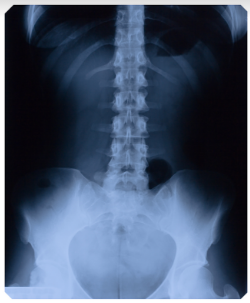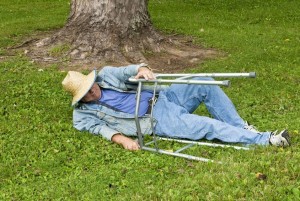Many personal injury lawsuits involve spinal cord injury claims. These cases can result in large settlements and in some cases large significant jury verdicts. 
Spinal cord injury victims may experience recurring pain, numbness as well as complete or partial paralysis. In some cases, recovery is possible. However, many people with spinal cord injuries only recover after extensive medical and therapeutic intervention. In other cases, little or no recovery is possible. In all spinal cord injury cases, you will have very high medical and other expenses.
If your spinal cord injury was due to another person’s negligence or misconduct, you should not have to bear the full cost of that injury. Please contact us to speak to an experienced spinal cord injury attorney.
Symptoms of Spine Injury
Spine injury describes an injury to the bundle of nerves known as the spinal cord or the bones and soft tissue that protects them. The spinal cord carries messages from your brain to the various parts of your body. An injury to the spinal cord can result in serious symptoms, such as full or partial paralysis, loss of sensation, or weakness in the limbs. In fact, a spinal cord injury affects all body tissues at or below the site of the injury, which includes both and internal organs.
An injury to the protective bone or soft tissue around the spinal cord may lead to less severe symptoms, some of which may persist. These inlcude:
-
Back pain
-
Pain in other parts of your body that seem to be free of injury
-
Numbness or tingling
-
Weakness in your limbs
These symptoms may be constant or may come and go. They may improve or they may worsen.
Effects of a Spinal Cord Injury
A severe spinal cord injury can result in full or partial paralysis. This in itself is traumatic. However, the ongoing impact on your body goes beyond paraplegia or quadraplegia. Among other things, your bladder and your bowels will function differently. You may lose control of both of these bodily functions. In addition, your skin and circulatory system will be impacted. It may even impact your respiratory system and your ability to have sex. Dealing with these changes often requires extensive rehabilitation and ongoing physical and psychological therapy.
Click on the following links for more information on these topics:
- www.webmd.com/brain/tc/living-with-a-spinal-cord-injury-bladder-care#1
- www.webmd.com/brain/tc/living-with-a-spinal-cord-injury-bowel-care#1
- www.webmd.com/brain/tc/living-with-a-spinal-cord-injury-pressure-sores#1
- www.webmd.com/brain/tc/living-with-a-spinal-cord-injury-lung-care
- www.webmd.com/brain/tc/living-with-a-spinal-cord-injury-intimacy-and-fertility#1
- www.webmd.com/brain/tc/living-with-a-spinal-cord-injury-rehabilitation
Causes of Spine Injury
Spine injury is caused by many types of accidents that may be due to the negligence of another person, including:
-
Swimming pool accidents
-
Falls (See below)
- Elevator Accidents
Medical malpractice is rarely a cause of spine injury. However, a rapid and proper response is essential to your final recovery. Emergency room errors may prevent you from ever recovering from your spinal cord injury.
 Falls are a Leading Cause of Spinal Cord Injury Lawsuits
Falls are a Leading Cause of Spinal Cord Injury Lawsuits
According to a recent study by Johns Hopkins, falls have surpassed auto accidents as the leading cause of spinal cord injuries. The study covered a three year period, from 2007 through 2009. While spinal cord injuries decreased slightly in adults age 18 to 64, they increased significantly in the elderly. Older spinal cord injury victims are much more likely to die from their injuries either in the emergency room or during their hospital stay.
The Elderly at Greatest Risk
The study analyzed information on 43,137 adults who were treated for spinal cord injuries in emergency rooms from 2007 through 2009. During the entire study period, 41.5% of spinal cord injuries were caused by falls, and in the elderly falls as the cause for spinal cord injury rose from 23.6% to 30% over study period.
Compared to younger adults, older adults who suffer spinal cord injuries are four times more likely to die from the injury in the emergency room and if they survive that stage of treatment and are admitted to the hospital, they are six times more likely to die during their hospital stay.
Fall Prevention
As we age our risk of falling increases. There are some things you can do to reduce your risk of falling in old age:
- Exercise for muscle strength, balance, and coordination
- Get your vision checked – wear the proper prescription glasses or contacts
- Do not wear bifocals or multifocal glasses while walking, especially on stairs
- Have adequate lighting
- Add handrails in your hallways
- Secure or remove loose rugs
- Consider replacing or covering slick flooring materials with a non-slip surface
What are the Legal Bases for Spinal Cord Injury Lawsuits?
The legal theories for spinal cord injury lawsuits generally fall into two categories depending on what led to the spinal cord injury in the first place: common negligence and defective products.
Negligence
Many lawsuits alleging damages for a spinal cord injury are based on the theory of negligence. Examples include: (a) slip and fall claims where a property owner failed to warn of a hazardous condition and that condition caused the victim to slip, trip or fall damaging his or her spinal cord. (b) A car crash caused by the negligence of another driver which resulted in severe damage to the victimms spine is another common example of a spinal cord injury lawsuit. If your spinal cord injury case is based on negligence. In these situations, the victim must establish that the other party’s negligence caused his spinal cord injury.
Product Liability
While not as common, many spinal cord injury claims are associated with defective products. An example of a product liability lawsuit involving a spinal cord injury could include a situation where the car crash that caused your spinal cord injury resulted from a defective vehicle part. Similarly, if a ladder or scaffolding broke due to a defect and that caused a fall which led to your spinal cord injury, you might be able to pursue a product liability claim.
Defenses to Spinal Cord Injury Lawsuits
In many spinal cord injury cases, the defendant will argue that it was the victim’s own negligence that caused the injury in the first place. Most states have a legal theory called comparative negligence which allows the jury to allocate a portion of the responsibility to the victim as well as the defendant. In this situation, the victim’s award would be reduced in accordance with his degree of fault. Please note that this is very complicated and each state has unique rules relating to comparative negligence.
A few states apply the legal theory known as contributory negligence under which the victim may be barred from recovering any compensation if he or she is found to be even 1% at fault.
Because the rules of comparative and contributory negligence are so complex, it pays to consult with an attorney in the jurisdiction where your spinal cord injury occurred.
Compensation for Spinal Cord Injury Claims
After your spinal injury, you may be completely or partially disabled. Fortunately, a settlemet or award can help. The person responsible for your injury should pay it. Compensation may include money for:
-
Lost wages and diminished earning capacity
-
Medical bills, including mobility aids
-
Diminished quality of life
- Life care costs
-
Current and ongoing pain and suffering
Spinal cord injury victims face an array of costs ranging from increased medical expenses to ongoing expenses for services that they have lost the ability to perform easily. Examples of life care expenses might include things like the ongoing cost of house cleaning and might even include the cost of a part-time or full-time attendant. This is in addition to loss of earning capacity which may result depending on the victim’s career. To the extent that vocational training is required to retrain the person with a spinal cord injury, vocational training is another expense that should be included in any spinal cord injury claim settlement.
People with spinal cord injury claims should choose your personal injury lawyer with care. It is essential that you choose an attorney with experience handling spinal cord injury lawsuits. That is why we only list attorneys recognized for excellence by their colleagues. Please call us today.















